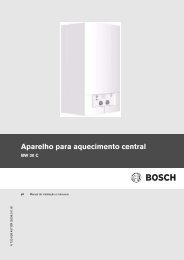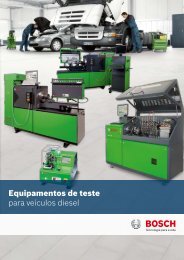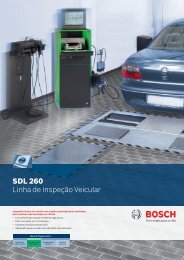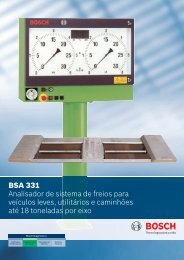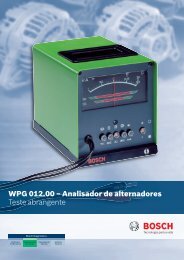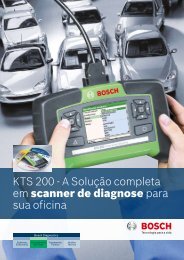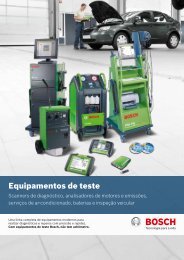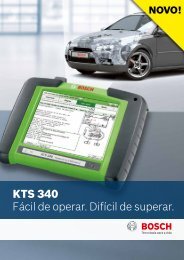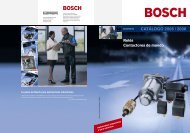Bosch Automotive A product history
Bosch Automotive A product history - Bosch worldwide
Bosch Automotive A product history - Bosch worldwide
- No tags were found...
Create successful ePaper yourself
Turn your PDF publications into a flip-book with our unique Google optimized e-Paper software.
44 | Supplement 2 | Journal of <strong>Bosch</strong> History<br />
This system required an intervention in the<br />
Motronic system to reduce engine speed<br />
until wheel spin ceased – something that<br />
would be inconceivable without electronic<br />
control of injection and ignition. To ensure<br />
that these increasingly complex controls<br />
worked properly, <strong>Bosch</strong> introduced additional<br />
self-diagnosis functions from 1987<br />
on. These were capable of recognizing and<br />
correcting malfunctions.<br />
Direct injection, stratified fuel charge,<br />
and downsizing<br />
In 2000, <strong>Bosch</strong> returned to an idea that<br />
had caused a stir when it featured in the<br />
Mercedes-Benz 300 SL of 1954: direct<br />
injection. The innovative thing about the<br />
“DI-Motronic” at the time was its stratified<br />
fuel charge. This process involved the<br />
burning of a small amount of rich air-fuel<br />
mixture close to the spark plug, which in<br />
turn allowed the burning of a lean mixture<br />
in the rest of the combustion chamber and<br />
a subsequent reduction of fuel consumption<br />
by as much as 10 percent.<br />
Downsizing is another way of reducing<br />
fuel consumption. In this case, the engine<br />
displacement or the number of cylinders<br />
is reduced while a turbocharger increases<br />
power. A combination of variable valve<br />
control, turbocharging, and gasoline direct<br />
injection reduces fuel consumption considerably<br />
while the engine’s power and<br />
torque remain the same. In conjunction<br />
with further measures, such as the startstop<br />
system, fuel consumption can be reduced<br />
by as much as 30 percent as compared<br />
to conventional engines.<br />
Left:<br />
Testing “Motronic” at the <strong>Automotive</strong><br />
Engineering Center in Schwieberdingen,<br />
near Stuttgart (1984). In 1979, the<br />
Motronic installed in the BMW 732i<br />
was the first system to manage injection<br />
and ignition from a single control unit.<br />
Right:<br />
A laser process enables the injection<br />
jet to be measured precisely. Optimizing<br />
the injection valve in this way lowers<br />
consumption, increases output, cuts<br />
emissions, and results in smoother<br />
operation (2005).<br />
1987 1991 1995 2000 2001<br />
2005<br />
On-board diagnosis<br />
for exhaust-gas<br />
monitoring<br />
Motronic with<br />
CAN bus<br />
Motronic with<br />
“electronic gas<br />
pedal” (EGAS)<br />
Motronic and injection<br />
components<br />
for gasoline direct<br />
injection (GDI)<br />
Motronic with 32-bit<br />
microprocessor<br />
Electro-hydraulic<br />
transmission control<br />
module



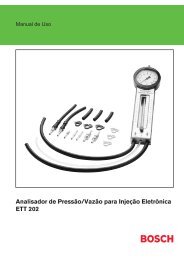

![Guia de instalação do ESI[tronic] Startcenter - Bosch](https://img.yumpu.com/53542449/1/190x135/guia-de-instalaaao-do-esitronic-startcenter-bosch.jpg?quality=85)
